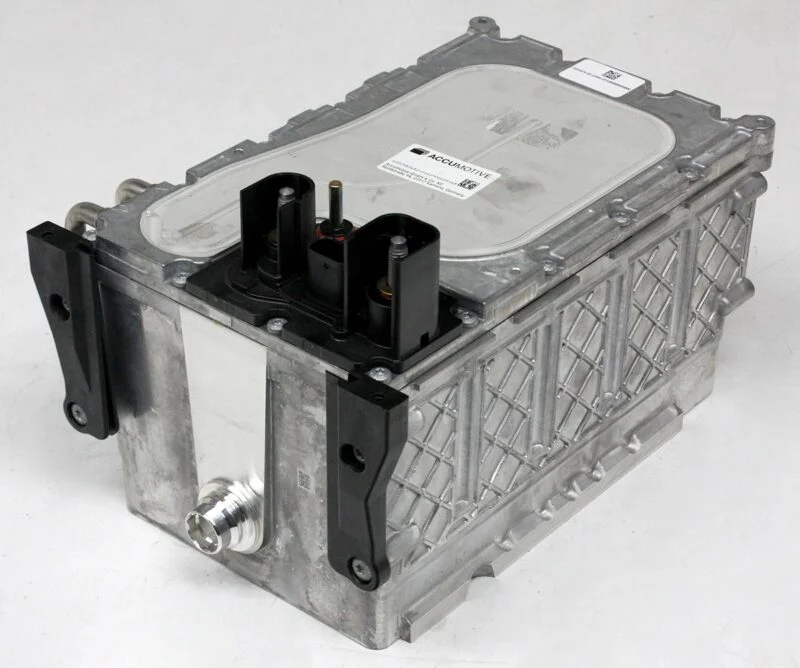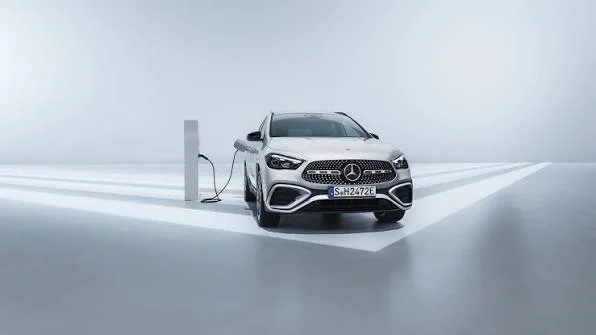Mercedes-Benz has been at the forefront of automotive innovation for decades, and their hybrid technology is no exception. As the brand pushes toward electrification—aiming for a carbon-neutral fleet by 2039—hybrid batteries play a pivotal role in bridging the gap between traditional gasoline engines and full EVs.
Types of Mercedes hybrid batteries: mild vs. plug-in and key differences
Mercedes hybrids come in two main flavors: mild hybrids (often branded as EQ Boost) and plug-in hybrids (EQ Power or Recharge models). The batteries differ significantly in design, capacity, and function, influencing everything from driving range to cost.
Mild hybrid batteries (48-Volt Systems)
These are the most common in modern Mercedes lineups, integrated into models like the C-Class, E-Class, GLS, and GLE SUVs. They use a compact lithium-ion battery, typically 0.9-1.0 kWh in capacity, paired with an integrated starter-generator (ISG). The battery is usually mounted under the rear seats or in the trunk floor to save space and maintain the vehicle’s balance.
- How they work:
The 48V system assists the gasoline engine by providing extra torque during acceleration (up to 21 hp and 184 lb-ft in some models), enabling smoother start-stop functionality, and recovering energy via regenerative braking. It doesn’t allow pure electric driving but improves fuel efficiency by 10-15% and reduces emissions.
- SUVs vs. sedans:
In SUVs like the GLE 450 or GLS 450, the battery is often larger and positioned for better weight distribution to handle the vehicle’s higher mass and towing capabilities (up to 7,700 lbs in some cases). Sedans like the E 450 have similar setups but with slightly smaller units for agility. The core technology is the same across body styles, but SUVs may include enhanced cooling systems for off-road or heavy-load scenarios.
Plug-in hybrid batteries (High-Voltage Systems)
Found in models like the S-Class Recharge, GLC 350e SUV, and C 300e sedan, these use larger lithium-ion packs (typically 13-31 kWh) that support electric-only driving. For example, the 2025 GLC 350e features a 24.8 kWh battery offering up to 60-70 miles of electric range.
- How they work:
The battery powers an electric motor (often 100-150 kW) for zero-emission mode, with seamless switching to the gas engine for longer trips. Charging takes 2-4 hours on a Level 2 home charger, and regenerative braking helps top it up on the go.
- SUVs vs. sedans:
PHEV batteries in SUVs (e.g., GLE 580e) are often larger and mounted lower for stability, with capacities up to 31 kWh to offset the vehicle’s weight. Sedans like the S 580e use slimmer packs (around 28 kWh) integrated into the trunk or floorpan to preserve cabin space. While the chemistry (lithium-ion NMC or LFP cells) is consistent, SUVs may have reinforced casings for durability in varied terrains.
Batteries aren’t interchangeable between SUVs and sedans due to size and mounting differences, but core components like cells are similar.
Both types use advanced battery management systems (BMS) to monitor temperature, voltage, and health, ensuring safety and efficiency. Mercedes sources cells from suppliers like CATL or LG, focusing on high energy density and fast charging.
What does a Mercedes battery look like?
Visually, Mercedes hybrid batteries are sleek, modular units designed for integration rather than show. They’re not meant for user access—always consult a certified technician for handling due to high-voltage risks.
Mild hybrid (48V)
These resemble a large rectangular box, about the size of a carry-on suitcase (roughly 2-3 feet long, 1 foot wide, and 6-8 inches tall), weighing 50-80 lbs. The casing is typically aluminum or composite plastic, with cooling vents, wiring harnesses, and connectors. Inside, it’s packed with lithium-ion pouch or cylindrical cells arranged in modules.

For example, in the E-Class, it’s hidden under the trunk floor, with a black or silver exterior featuring Mercedes branding and warning labels for high voltage.
Plug-in hybrid (high-voltage)

Larger and heavier (up to 300-400 lbs), these look like a flat, elongated slab (4-5 feet long, 2 feet wide, 8-12 inches thick) to fit under the floor or in the trunk. The steel or aluminum case is sealed with glue and sometimes copper mesh for electromagnetic shielding. Cells are arranged in series (e.g., 88s1p configuration in the C350e, 290V nominal). External features include orange high-voltage cables, cooling ports, and diagnostic ports. In SUVs, they might have additional protective plates underneath for off-road protection.
If you’re curious, YouTube teardowns show the internals—search for “Mercedes C350 hybrid battery teardown” for visuals, but remember, these are hazardous to disassemble yourself.
Mercedes hybrid battery lifespan: how long do they last?
One of the biggest concerns for hybrid owners is battery longevity. Mercedes hybrid batteries are engineered for durability, but lifespan varies by type, usage, and conditions.
Expected lifespan
Mild hybrid 48V batteries typically last 8-12 years or 100,000-150,000 miles, as they’re less stressed than PHEV packs. PHEV batteries can endure 10-15 years or 150,000-200,000 miles with proper care, often outlasting the vehicle’s other components. Some owners report PHEV batteries going strong beyond 150,000 miles without major issues.
Factors affecting battery’s life
Extreme temperatures shorten life—hot climates accelerate degradation, while cold reduces efficiency. Frequent short trips, deep discharges (in PHEVs), and lack of maintenance can cut years off. Conversely, regular charging, moderate driving, and software updates extend it.
SUVs vs. others
No major differences; SUVs’ batteries may degrade slightly faster due to higher loads, but Mercedes’ thermal management mitigates this.
Real-world data from forums like MBWorld shows rare failures before 100,000 miles, especially under warranty.
Battery warranty: coverage details
Mercedes provides robust warranties to ease concerns about battery reliability.
Standard coverage
For PHEVs, the high-voltage battery is warranted for 6 years or 62,000 miles (whichever comes first), covering defects and excessive degradation (typically below 70-80% capacity). Mild hybrids fall under the general 4-year/50,000-mile vehicle warranty, but the 48V battery often gets 8 years/100,000 miles in emissions-compliant states.
Extended options
In CARB states (e.g., California), PHEV batteries get 10 years/150,000 miles. Mercedes offers extended warranties up to 15 years/150,000 miles for EVs, which may apply to hybrids. Check your model’s specifics—e.g., the EQS SUV’s battery is covered for 10 years/155,000 miles, but hybrids are shorter.
Warranties exclude abuse, accidents, or improper charging. Always use certified Mercedes service for claims.
Signs of hybrid battery failure: what to watch for
Early detection can prevent breakdowns. Common symptoms include:
- Reduced fuel efficiency:
A sudden drop in MPG (e.g., from 50+ MPGe to under 40) signals weakening cells.
- Warning lights:
Dashboard alerts like “Hybrid System Malfunction,” battery icon, or check engine light.
- Performance issues:
Sluggish acceleration, frequent gas engine use, or inability to hold electric mode.
- State of charge fluctuations:
Battery level drops quickly or doesn’t recharge fully via regen.
- Other:
Dim lights, strange noises from the battery area, or error codes like “Hybrid Battery Pack Deterioration.”
If you notice these, scan with an OBD-II tool or visit a dealer—ignoring them can lead to total failure.
How to replace a Mercedes hybrid battery: process and costs
Replacement is a job for professionals due to high-voltage safety protocols.
Process
1. Diagnosis: Dealer uses Mercedes’ STAR system to confirm failure.
2. Preparation: Vehicle is de-energized; high-voltage cables disconnected (orange ones first).
3. Removal: Battery is unbolted from trunk/rear (sedans) or underbody (SUVs)—takes 4-8 hours.
4. Installation: New pack fitted, recalibrated via software update.
5. Testing: Full system check for integration.
Costs
Mild hybrids: $500-$2,000 (parts + labor). PHEVs: $7,000-$15,000, e.g., S550e at $14,000+. Labor adds $500-$1,000. Third-party remanufactured options from Greentec Auto can save 30-50%.
SUV replacements might cost more due to access complexity.
Repairing a Mercedes hybrid battery: what are the options?
Not all failures require full replacement—repairs can extend life.
- Common repairs:
Cell balancing, module replacement, or cooling system fixes. For example, reconditioning packs costs $449+ per cell at specialists. Mercedes dealers prefer full swaps, but independents like Greentec offer hybrid-specific services.
- DIY?:
Absolutely not—high voltage (up to 400V) risks electrocution. Always use certified techs.
- Viability:
Mild hybrids are easier/cheaper to repair; PHEVs may need specialized tools. Warranty covers repairs if applicable.
Maintenance tips for optimal battery health
- Charge PHEVs regularly (80% max for daily use).
- Avoid extreme temps—park in shade or garage.
- Use Mercedes apps for health monitoring.
- Schedule annual inspections; update software.
- For SUVs, check for debris in underbody vents.
Pros, cons, and final thoughts
- Pros: Long lifespan, efficiency boosts, warranties provide peace of mind.
- Cons: High replacement costs, sensitivity to heat/cold.
- Mercedes hybrid batteries are reliable and advanced, but informed ownership is key. If issues arise, consult your dealer promptly. For model-specific advice, visit Mercedes-Benz USA or forums like MBWorld. With proper care, your battery could last the vehicle’s life—making your hybrid a smart, sustainable choice.

Leave a Reply
You must be logged in to post a comment.